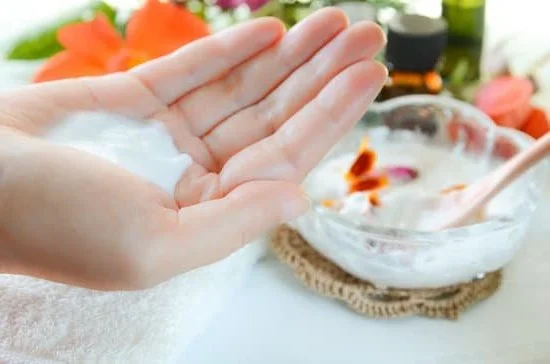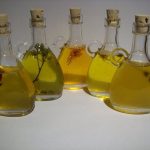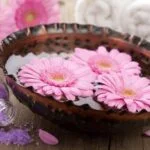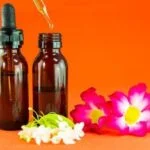Can you use an aromatherapy diffuser as a humidifier? This question arises when we consider the purpose and functionality of these two popular devices.
An aromatherapy diffuser is primarily used for dispersing essential oils into the air, while a humidifier is designed to add moisture to the indoor environment. In this article, we will delve into the differences and similarities between these devices, explore the science behind humidity and its effects on health, and discuss whether it is possible to repurpose an aromatherapy diffuser as a humidifier.
To begin with, let’s understand what exactly an aromatherapy diffuser and a humidifier are. An aromatherapy diffuser is a device that breaks essential oils down into small molecules, disperses these molecules into the air, and fills the surroundings with fragrance. It is commonly used for relaxation, stress relief, and therapeutic purposes. On the other hand, a humidifier is specifically designed to add moisture to dry indoor air, improving humidity levels for better comfort and health.
While both devices add moisture to the air, they do so in different ways with distinct features and intended uses. Aromatherapy diffusers typically emit tiny particles of essential oils mixed with water vapor or heat.
They are not equipped with large water tanks like humidifiers but rather focus on dispersing scent molecules throughout the room. Humidifiers, on the other hand, have larger reservoirs that can hold significant amounts of water which are then evaporated and released as water vapor into the air.
In the following sections of this article outline, we will further explore how each device works individually as well as their respective benefits. We will also evaluate the possibility of using an aromatherapy diffuser as a humidifier while discussing its limitations and potential risks. By the end of this article, we hope to provide you with the necessary information to make an informed decision about which device is right for your needs and preferences.
The Similarities and Differences Between Aromatherapy Diffusers and Humidifiers
Aromatherapy diffusers and humidifiers are both popular devices used to add moisture to the air, but they have distinct differences in their features and intended uses. Understanding these similarities and differences can help individuals make an informed decision about which device best suits their needs.
Similarities
Both aromatherapy diffusers and humidifiers work by adding moisture to the air, improving the humidity levels in indoor environments. They are designed to combat dryness in the air, which can lead to various discomforts such as dry skin, irritated nasal passages, and respiratory issues. By increasing humidity, both devices aim to create a more comfortable living environment.
Additionally, both aromatherapy diffusers and humidifiers offer potential health benefits. When essential oils are used with an aromatherapy diffuser, they can provide therapeutic effects such as relaxation, stress relief, and mood enhancement. Similarly, humidifiers can help alleviate symptoms of respiratory conditions like allergies or asthma by reducing congestion and promoting easier breathing.
Differences
While aromatherapy diffusers and humidifiers have some overlapping purposes, they differ significantly in their primary functions and intended uses. Aromatherapy diffusers are primarily used for their fragrance-dispersing capabilities, allowing individuals to enjoy the scent of essential oils while reaping potential therapeutic benefits. On the other hand, humidifiers focus solely on adding moisture to the air without any emphasis on fragrance or essential oils.
In terms of operation, there are various types of aromatherapy diffusers available such as ultrasonic diffusers and nebulizing diffusers that disperse essential oils through different mechanisms. Humidifiers also come in different types like evaporative humidifiers or ultrasonic humidifiers that use different methods to increase humidity levels.
It is important to note that while an aromatherapy diffuser can add some moisture to the air, it may not be as effective or efficient as a dedicated humidifier. Aromatherapy diffusers are designed for scent diffusion purposes and typically have smaller water tanks, resulting in lower moisture output compared to humidifiers.
Understanding these similarities and differences between aromatherapy diffusers and humidifiers is crucial when deciding which device to use. Individuals seeking primarily therapeutic benefits with pleasant scents may opt for an aromatherapy diffuser, while those focusing solely on improving humidity levels might prefer a dedicated humidifier. Ultimately, personal preferences and specific needs should guide the choice of device.
The Science Behind Humidity and Its Effects on Health and Well-being
Maintaining optimal humidity levels in indoor environments is crucial for overall health and well-being. Humidity refers to the amount of moisture present in the air, and it plays a significant role in various aspects of our daily lives. Understanding the science behind humidity and its effects on our health can help us appreciate the importance of using devices like humidifiers and aromatherapy diffusers.
Importance of Optimal Humidity Levels:
Properly humidified air can have numerous health benefits. One of the primary reasons for maintaining optimal humidity levels is that it helps keep our respiratory system functioning optimally. Dry air can irritate the nose, throat, and lungs, causing symptoms such as dry coughs, sore throats, and congestion. By adding moisture to the air, humidifiers create an environment that can alleviate these respiratory issues.
Additionally, adequate humidity levels are essential for healthy skin. Dry air tends to suck moisture from our skin, leading to dryness, irritation, and even exacerbating certain dermatological conditions like eczema. Moisturizing the air with a humidifier helps keep the skin hydrated and prevents these problems.
Negative Effects of Low Humidity:
On the other hand, low humidity levels can have detrimental effects on both our health and everyday life. When the air is too dry, it can cause dehydration as we lose more moisture through respiration. This can lead to fatigue, difficulty concentrating, and even headaches.
Furthermore, low humidity negatively affects our respiratory system by making us more susceptible to infections like colds or flu viruses. It dries out nasal passages, reducing their ability to filter out harmful particles effectively.
Overall, understanding how humidity affects our health underscores the need for maintaining balanced indoor environments. By incorporating devices like humidifiers or aromatherapy diffusers into your living space, you can create a healthier atmosphere that promotes optimal well-being for you and your family.
Understanding How Aromatherapy Diffusers Work
Aromatherapy diffusers are devices designed to disperse essential oils into the air, allowing their natural aromas and healing properties to be inhaled and absorbed. These diffusers come in various types, including ultrasonic diffusers, evaporative diffusers, heat diffusers, and nebulizing diffusers.
- Ultrasonic diffusers work by using water and ultrasonic vibrations to create a fine mist of essential oil particles that are then released into the air.
- Evaporative diffusers use a fan or heat source to evaporate the essential oil, which is then dispersed into the surrounding air.
- Heat diffusers utilize heat to warm up and evaporate the essential oil. They are often used with ceramic or electric heating elements.
- Nebulizing diffusers use pressurized air or cold air diffusion to break down the essential oil into tiny molecules that can be easily dispersed throughout a room.
Regardless of their specific mechanisms, all aromatherapy diffusers serve the purpose of transforming liquid essential oils into airborne molecules that can be inhaled for therapeutic purposes. The benefits of using essential oils with an aromatherapy diffuser are numerous.
- Aromatherapy is commonly used for relaxation and stress relief. Certain scents like lavender, chamomile, or ylang-ylang can help promote calmness and improve sleep quality.
- Some essential oils have antibacterial, antiviral, or antifungal properties that can contribute to maintaining a clean and healthy environment.
- Aromatherapy can also aid in boosting mood and enhancing concentration. Scents like lemon or peppermint are known for their energizing effects.
It’s important to note that while aromatherapy diffusers provide numerous positive effects on well-being, they primarily focus on scent dispersion rather than adding moisture to the air. This is where the distinction between an aromatherapy diffuser and a humidifier becomes clear.
Humidifiers
Humidifiers are devices designed to add moisture to the air in indoor environments. They come in different types, including cool-mist humidifiers, warm-mist humidifiers, evaporative humidifiers, and ultrasonic humidifiers. The primary purpose of a humidifier is to combat dryness, particularly during the winter months when the air tends to be drier due to heating systems.
One of the key uses of humidifiers is to prevent and alleviate dry skin, throat, nose, and lips. By increasing humidity levels in the air, these devices help keep mucous membranes moist, reducing irritation and discomfort. This can be especially beneficial for individuals with respiratory conditions like asthma or allergies as it helps soothe their airways and improve breathing.
In addition to preventing dryness, humidifiers also offer numerous health benefits. They can help relieve symptoms associated with colds, flu, sinus infections, and other respiratory illnesses by keeping the nasal passages hydrated and facilitating easier breathing. Moreover, maintaining optimal humidity levels indoors can reduce the risk of infections by making it harder for viruses and bacteria to survive in the environment.
To use a humidifier effectively, it’s important to place it in an appropriate location where its benefits can reach a wide area within the room. Regular cleaning is essential to prevent mold or bacteria growth that could be detrimental to health.
Additionally, users should monitor humidity levels using a hygrometer and adjust their device accordingly to maintain a comfortable level between 30% and 50%. By following these guidelines and selecting a suitable type of humidifier based on personal preferences and needs, individuals can optimize their indoor environment for better respiratory health and overall well-being.
Can You Use an Aromatherapy Diffuser as a Humidifier?
Aromatherapy diffusers and humidifiers are both appliances that add moisture to the air, but they serve different purposes. An aromatherapy diffuser is specifically designed to disperse essential oils into the air for therapeutic purposes, while a humidifier is primarily used to increase the humidity levels in a room. Understanding the differences between these devices is important when considering whether an aromatherapy diffuser can be used as a humidifier.
Aromatherapy diffusers utilize various methods such as ultrasonic technology, nebulization, or heat to disperse essential oils into the air. These devices are created to release tiny particles of essential oils into the atmosphere, which can then be inhaled for their aromatic benefits. Aromatherapy has been known to promote relaxation, reduce stress, and uplift mood. However, aromatherapy diffusers are not intended to add significant amounts of moisture into the air like humidifiers do.
On the other hand, humidifiers are designed specifically for increasing humidity levels in indoor environments. There are different types of humidifiers available on the market, including evaporative, ultrasonic, impeller, and steam vaporizers. Each type works differently but all aim to add moisture into dry air conditions. Humidifiers can help alleviate symptoms of dry skin and lips, nasal congestion, allergies, and more importantly respiratory issues like asthma or bronchitis.
Although some people may wonder if they could use an aromatherapy diffuser as a humidifier due to their similarities in adding moisture to the air, it is not recommended. The primary purpose of an aromatherapy diffuser is to improve well-being through inhalation of essential oils’ aroma molecules rather than adjusting humidity levels.
As mentioned before, aromatherapy diffusers release only small particles of essential oil into the air while humidifiers are capable of dispersing larger amounts of mist or steam. Consequently, using an aromatherapy diffuser as a humidifier may not effectively humidify a room and could potentially cause damage to the device.
Ultimately, when considering the use of either an aromatherapy diffuser or a humidifier, it is important to understand their intended purposes and choose accordingly based on one’s specific needs and preferences. While an aromatherapy diffuser can enhance mood and relaxation through the inhalation of essential oils, a humidifier is more suitable for addressing dry air conditions and respiratory concerns.
Tips for Using an Aromatherapy Diffuser or Humidifier Effectively
Using an aromatherapy diffuser or humidifier effectively is essential to maximize their benefits and ensure a safe and comfortable indoor environment. Here are some tips to help you make the most out of these devices:
- Read the Instructions: Before using an aromatherapy diffuser or humidifier, it is crucial to thoroughly read and understand the manufacturer’s instructions. Each device may have specific guidelines on operation, maintenance, and safety precautions. Following these instructions will help you use the device correctly and avoid any potential risks.
- Choose the Right Location: When placing your aromatherapy diffuser or humidifier, consider the size of the room and its ventilation. For optimal dispersion of essential oils or humidity, select a central location in the room that allows for equal distribution throughout the space. Avoid placing them near electronics or objects that could be damaged by moisture.
- Use High-Quality Essential Oils: If you are using an aromatherapy diffuser, make sure to use high-quality essential oils from reputable brands. Low-quality oils may contain impurities that can be harmful when dispersed into the air. Look for pure essential oils that have been tested for quality and authenticity.
- Clean Regularly: Both aromatherapy diffusers and humidifiers need regular cleaning to maintain their performance and prevent bacterial growth. Follow the manufacturer’s instructions on how often to clean your device and use recommended cleaning solutions. Empty any remaining water from the tank daily, wipe down all surfaces regularly, and deep clean according to the recommended schedule.
- Use Distilled Water: Using distilled or filtered water in your humidifier can help reduce mineral buildup and prolong its lifespan. Tap water often contains minerals that can create deposits in the tank and other components of the humidifier.
- Monitor Humidity Levels: If you are using a humidifier, it is important to monitor humidity levels in your home. Excessive humidity can promote mold growth, while low humidity can cause dryness and discomfort. Invest in a hygrometer to measure moisture levels and adjust the humidifier settings accordingly.
- Use the Recommended Amount: When using an aromatherapy diffuser, follow the instructions regarding the recommended amount of essential oil to use. Overloading the diffuser with too much oil may lead to overpowering scents and potential respiratory irritation.
By following these tips, you can ensure that your aromatherapy diffuser or humidifier is used effectively and safely. Remember to always prioritize your health and well-being when using these devices, and consult with a healthcare professional if you have any specific concerns or conditions.
Making an Informed Decision
After understanding the differences and similarities between aromatherapy diffusers and humidifiers, it is important to consider which device may be the right choice for your needs. When making a decision, factors such as personal preferences, health concerns, and lifestyle must be taken into account.
If you are looking for a device primarily focused on adding moisture to the air, a humidifier would likely be the better option. Humidifiers are specially designed to increase humidity levels in indoor environments, preventing dryness that can lead to various issues such as dry skin, chapped lips, and irritated nasal passages. They come in different types, including evaporative humidifiers that use a fan to blow moisture into the air and ultrasonic humidifiers that produce a cool mist.
On the other hand, if you are interested in not only increasing humidity but also enjoying the benefits of aromatherapy, an aromatherapy diffuser may be more suitable. Aromatherapy diffusers work by dispersing essential oils into the air to create a pleasant scent and potentially provide therapeutic benefits. They come in various types such as ultrasonic diffusers that emit fine mists of essential oils and nebulizing diffusers that break down essential oils into microscopic particles for rapid dispersion.
Another aspect to consider is maintenance and cleaning requirements. Humidifiers generally require more frequent cleaning due to their water reservoirs, while aromatherapy diffusers usually only need regular wiping or rinsing with water after each use.
Overall, making an informed decision between an aromatherapy diffuser and a humidifier depends on your specific needs and preferences. If you prioritize moisture levels in your environment without any interest in aromatherapy benefits, a humidifier will likely suit you best. On the other hand, if you desire both increased humidity and the potential advantages of using essential oils for relaxation or mood-boosting purposes, an aromatherapy diffuser might be the ideal choice.
By carefully considering these factors and weighing the pros and cons of each device, you can make a decision that aligns with your goals and contributes to a balanced indoor environment for optimal health and well-being.
Conclusion
In conclusion, when it comes to deciding between an aromatherapy diffuser and a humidifier, it is important to weigh the pros and cons of each device. Aromatherapy diffusers are great for creating a relaxing and soothing environment, with the added benefit of being able to customize the scent with essential oils.
They are ideal for those looking to enhance their overall well-being and mood. On the other hand, humidifiers are specifically designed to add moisture to the air and can provide relief from dryness, especially for individuals with respiratory issues.
While both devices serve the purpose of increasing humidity levels in indoor spaces, there are some key differences between them that should be considered. Aromatherapy diffusers may not have the same capacity as humidifiers for moisturizing larger areas or combating severe dryness. Additionally, relying solely on an aromatherapy diffuser for humidifying purposes may not achieve optimal results.
It is crucial to understand your specific requirements and preferences before making a decision. If you are primarily seeking therapeutic benefits such as relaxation and stress relief, an aromatherapy diffuser may be the right choice for you. However, if you are dealing with dry air problems or respiratory issues, investing in a dedicated humidifier would be more suitable.
Ultimately, maintaining a balanced indoor environment is essential for optimal health and well-being. Whether you decide to use an aromatherapy diffuser or a humidifier, it is important to follow best practices such as regular cleaning and maintenance. By making an informed decision based on your needs and considering the pros and cons of each device, you can create a comfortable and healthy living space.
Frequently Asked Questions
Can I turn my diffuser into a humidifier?
It is not recommended to turn a diffuser into a humidifier. While both diffusers and humidifiers are designed to add moisture to the air, they do so in different ways. Diffusers are typically used with essential oils and release a fine mist or vapor that disperses the aroma throughout the room.
On the other hand, humidifiers are specifically designed to increase humidity levels by releasing water vapor into the air. They often have larger water tanks and more powerful output mechanisms to achieve this purpose effectively. Attempting to modify a diffuser in order to function as a humidifier may compromise its performance and could potentially damage the device.
How can I make my air humid without a humidifier?
There are several methods that can help increase humidity levels in your home without using a humidifier. One simple step is to place shallow containers filled with water near heat sources, such as radiators or vents. As the water evaporates, it adds moisture to the air.
You can also hang damp towels or clothes indoors so that they naturally release moisture into the environment as they dry. Taking warm showers with the bathroom door open allows steam to spread throughout your home and raise humidity temporarily. Lastly, if you have houseplants, grouping them together can create a mini greenhouse effect, increasing humidity levels around them.
Does a diffuser help with congestion?
While diffusers are primarily used for aromatherapy purposes rather than congestion relief, some individuals may find certain essential oils beneficial in helping alleviate congestion symptoms. However, it’s important to note that diffusers alone may not provide significant relief from congestion caused by conditions like colds or allergies.
If you’re experiencing congestion, it’s advisable to seek appropriate medical advice and consider using approved decongestant medications or nasal sprays specifically designed for congestion relief in conjunction with other remedies like steam inhalation or saline nasal rinses.

Are you looking for a natural way to improve your health and wellbeing?
If so, aromatherapy may be the answer for you.






